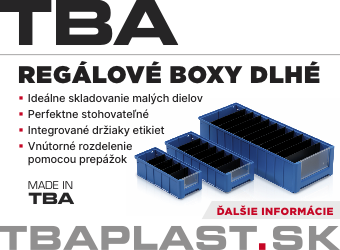3-point bending test of plastics reinforced with cellulose nanofibers
Plastic foam is lightweight and has excellent thermal insulation and damping properties because the interior of the material contains many cavities. On the other hand, the strength of plastic foam is lower than non-foam materials because the volume of plastic per unit volume is smaller.
Addition of fiber or other reinforcing materials is one technique for obtaining satisfactory strength in materials in which foaming is used to impart light weight and thermal insulating properties. Although glass fiber and carbon fiber are often used as reinforcing materials, research and development using cellulose nanofibers (hereinafter, CNF) as a plant-derived high performance new material has progressed recently.
Cellulose, consisting mainly of substances such as plant cell walls and cotton, is the most common carbohydrate on Earth and has long been used as a raw material for paper and cotton fiber. Recently, CNF with higher functionality realized by defibrating cellulose to the nano level has attracted interest. As a plant-derived material, CNF has a low environmental impact, and also has a variety of desirable properties, including low linear expansion, a gas barrier property, and transparency. In comparison with ferrous materials, CNF weighs only 1/5 as much but has a high specific strength, being 5 times stronger than steel, and strength equal or superior to that of the conventional materials can be realized compounding CNF with plastics and rubber. Therefore, CNF has attracted interest as a new material following carbon fiber.
 | |
| Fig. 1 Shimadzu AGS-X |
This article introduces a 3-point flexural test using a deflection measuring device and test speed in compliance with JIS K 7171, which is generally used in strength evaluation of plastics, and compares the differences in flexural strength with/without CNF and with/without foaming.
Specimens
The CNF reinforced plastic measured in the study was a high density polyethylene (hereinafter, HDPE). Test specimens were prepared by adding 5 % CNF to HDPE as the matrix plastic. To investigate differences in the internal condition, internal observation of the specimens was performed with an inspeXio SMX100CT microfocus X-ray CT system prior to the tests. Fig. 2 shows CT images of the specimens, in which voids appear as black areas. There is no large difference between the non-foamed plastic without CNF (①) and the non-foamed CNF reinforced plastic (②). In the foamed plastics, it was found that finer voids existed in a uniformly dispersed condition in the CNF reinforced plastic (④) than in the plastic without CNF. Thus, the possibility that CNF impedes the growth and coalescence of voids is conceivable.
 | |
| Fig. 2 CT Images |
Measuring System
Fig. 3 shows the condition of the test, and Table 1 shows the test conditions. After measuring flexural modulus of elasticity, the test speed was changed in order to measure flexural strength efficiently. For precise measurement of the deflection of the specimens, the test was performed by using a deflectometer in the displacement measurements.
 | |
| Fig. 3 Condition of Test |
Table 1 Test Conditions
| Instrument | AGS-X |
| Load Cell | 1 kN |
| Test Fixture | Three-Point Bending Test Jig for Plastic (Punch R5, Supports R5) |
| Distance Between Supports | 40 mm |
| Flexural Deflection | Deflection Measuring Device for |
| Measuring Devices | Three-Point Bending Test |
| Software | TRAPEZIUM X Single |
| Test Speed | 1 mm/min → 20 mm/min |
| Number of Tests | 3 Pieces/Specimen |
| Specimen Dimensions | 3 Pieces/Specimen |
Test Results
Fig. 4 shows the test results. With the CNF reinforced plastics (②, ④), brittle facture occurred, as can be seen by the sharp decrease in test force after achieving maximum strength. The non-CNF plastics ( ① , ③ ) displayed ductile behavior, in which the test force decreased gradually.
 | |
| Fig. 4 Test Results |
Table 2 summarizes the test results for all specimens. The flexural modulus of elasticity was calculated from the slope of flexural strain of 0.05 % to 0.25 %.
Comparing the values of the non-CNF HDPE (①, ③) and the CNF reinforced plastic ( ② , ④ ), the CNF reinforced plastic showed higher values for both the flexural modulus of elasticity and flexural strength. Moreover, comparing the coefficients of variation of the flexural strengths of the HDPE plastic foam (③) and the CNF reinforced plastic foam (④), it was found that variation of the CNF reinforced plastic was smaller.
Table 2 Summary of Test Results (Average of n=3)
| Flexural Modulus of Elasticity (GPa) | Flexural Strength (MPa) | Coefficient of Variation of Flexural Strength (%) | |
| ① HDPE | 1.29 | 55.2 | 0.7 |
| ② HDPE + CNF5 % | 1.56 | 61.8 | 0.2 |
| ③ HDPE (Foam) | 0.87 | 32.7 | 4.0 |
| ④ HDPE + CNF 5 % (Foam) | 1.29 | 42.5 | 0.2 |
Conclusion
It was possible to increase the flexural modulus of elasticity and flexural strength of plastic by adding CNF. In addition to improving those properties, in the case of plastic foam, it was also found that stable plastic foam molding, for example, without variations in void size, is possible by adding CNF. Although various types of evaluation are necessary for application of CNF composite materials to members, evaluation of strength is one key item. In this study, the deflection of the specimens could be measured with high accuracy because a deflectometer was used. Accurate evaluation of the mechanical properties of materials containing CNF is possible by using Shimadzu measuring systems.
- autor:
- SHIMADZU Handels GmbH - organizační složka


















